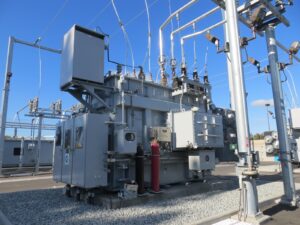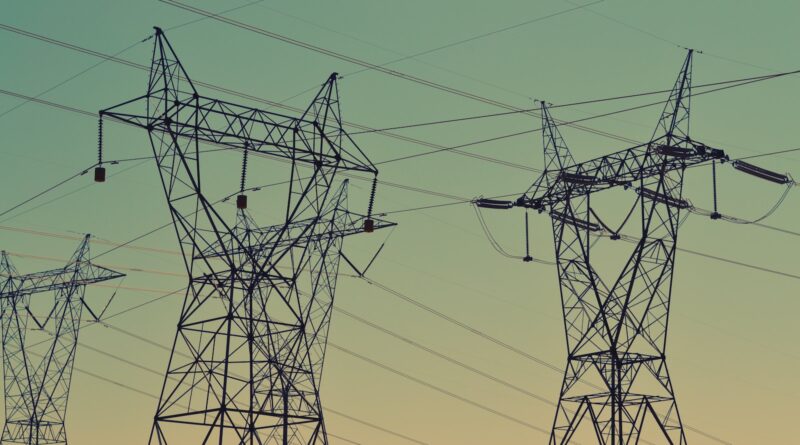Fluctuations in Electricity Prices: Understanding the Factors Behind the Volatility
Electricity prices are an essential aspect of modern societies, as electricity is a fundamental resource for human activities, from lighting and heating to powering the economy. However, electricity prices are not fixed and can fluctuate frequently, depending on various factors. In this text, we will explore the reasons behind these fluctuations in electricity prices.
 One of the primary reasons for electricity price fluctuations is supply and demand. As with any product or service, when demand is high and supply is low, prices will increase. Conversely, when supply is high and demand is low, prices will decrease. Electricity is no exception. During peak hours, when people are consuming more electricity, the demand for electricity increases. If there is not enough supply to meet this demand, prices will increase. On the other hand, during off-peak hours, when demand is low, prices will decrease. Therefore, fluctuations in demand and supply are a significant factor that affects electricity prices.
One of the primary reasons for electricity price fluctuations is supply and demand. As with any product or service, when demand is high and supply is low, prices will increase. Conversely, when supply is high and demand is low, prices will decrease. Electricity is no exception. During peak hours, when people are consuming more electricity, the demand for electricity increases. If there is not enough supply to meet this demand, prices will increase. On the other hand, during off-peak hours, when demand is low, prices will decrease. Therefore, fluctuations in demand and supply are a significant factor that affects electricity prices.
Another important factor that influences electricity prices is the availability of natural resources. Natural resources such as coal, gas, and oil are used to produce electricity. When the prices of these resources increase, the cost of producing electricity also increases, and electricity prices follow suit. For example, during the 1970s, the price of oil skyrocketed due to the oil crisis, leading to a surge in electricity prices. Conversely, when the prices of natural resources decrease, the cost of producing electricity also decreases, leading to lower electricity prices.
Government policies and regulations are also significant factors that impact electricity prices. Governments may implement policies that promote renewable energy sources, such as wind and solar power, or they may impose taxes on carbon emissions to encourage clean energy production. These policies can significantly affect the cost of electricity production, which, in turn, can affect electricity prices. For example, if a government introduces incentives for renewable energy production, the price of electricity may increase in the short term as the cost of transitioning to renewable energy sources is high. However, in the long term, these policies can lead to lower electricity prices as renewable energy sources become more affordable and accessible.
The weather is also an essential factor that can affect electricity prices. Extreme weather events, such as heat waves or cold snaps, can lead to an increase in the demand for electricity as people use more energy to regulate their indoor temperature. At the same time, extreme weather events can also disrupt the production of electricity. For example, severe storms can damage power lines or disrupt the operation of power plants, leading to a decrease in the supply of electricity. In either case, fluctuations in weather patterns can impact electricity prices.
Market structure is another important factor that influences electricity prices. In many countries, electricity is produced and distributed by a few large companies. These companies may have monopolies in certain areas, which means they have the power to set prices. In such situations, prices may be higher than in competitive markets where several companies operate. However, even in competitive markets, electricity prices can fluctuate depending on the competitiveness of the market. If there are few competitors, prices may be higher than in markets with more competitors.
Fluctuations in currency exchange rates can also impact electricity prices. The cost of natural resources used in electricity production, such as coal and gas, is often denominated in US dollars. Therefore, when the value of the local currency decreases, it becomes more expensive to purchase these resources, which increases the cost of producing electricity. As a result, electricity prices may increase to reflect the increase in production costs.
Finally, technological advancements can also affect electricity prices. New technologies that increase the efficiency of electricity production, such as advanced power plant designs or improvements in renewable energy technologies, can decrease the cost of producing electricity, leading to lower prices. On the other hand, new technologies that increase the demand for electricity, such as electric cars or energy-intensive industries, can increase the demand for electricity, leading to an increase in electricity prices if the supply is not sufficient.
With the fluctuation in electricity prices, comparing prices among different energy providers is a crucial step in ensuring that you are getting the best deal possible. The good news is that comparing electricity prices is now easier than ever, thanks to online comparison tools and platforms that provide consumers with a simple and user-friendly interface to compare rates and plans among different providers.
When comparing electricity prices, it is essential to understand the different components that make up your energy bill. Electricity bills typically consist of two main parts: the cost of energy consumption and the distribution charges. The cost of energy consumption is the price you pay per unit of electricity used, while distribution charges are the fees you pay to your energy provider for delivering electricity to your home or business.
When comparing electricity prices, it is essential to consider both the cost of energy consumption and distribution charges, as they can vary significantly among different providers. Some providers may offer lower energy consumption rates but higher distribution charges, while others may have higher energy consumption rates but lower distribution charges. Therefore, it is crucial to compare the total cost of electricity bills rather than just the energy consumption rates.
There are several online platforms and comparison websites where you can compare electricity prices among different providers. Here are some of the popular ones:
- Energy Made Easy – This is a government-run website that allows consumers to compare energy plans from different providers in Australia.
- Compare the Market – This website allows you to compare electricity and gas plans from a range of providers in Australia, including AGL, Origin Energy, and Energy Australia.
- Canstar Blue – This website provides comprehensive reviews and ratings of electricity and gas providers in Australia, along with a comparison tool that allows you to compare prices and features.
- iSelect – This website offers a comparison tool for electricity, gas, and internet plans, allowing you to compare prices and features from a range of providers.
- Elpriser – This website provides a comparison tool that allows you to compare energy plans from different providers in Denmark.
Before using any comparison tool or website, it’s important to ensure that they are reliable and unbiased. You should also check whether they include all the providers in your area and whether they provide accurate and up-to-date information on prices and plans. Additionally, it’s a good idea to read reviews and feedback from other consumers who have used these tools before making a decision.



